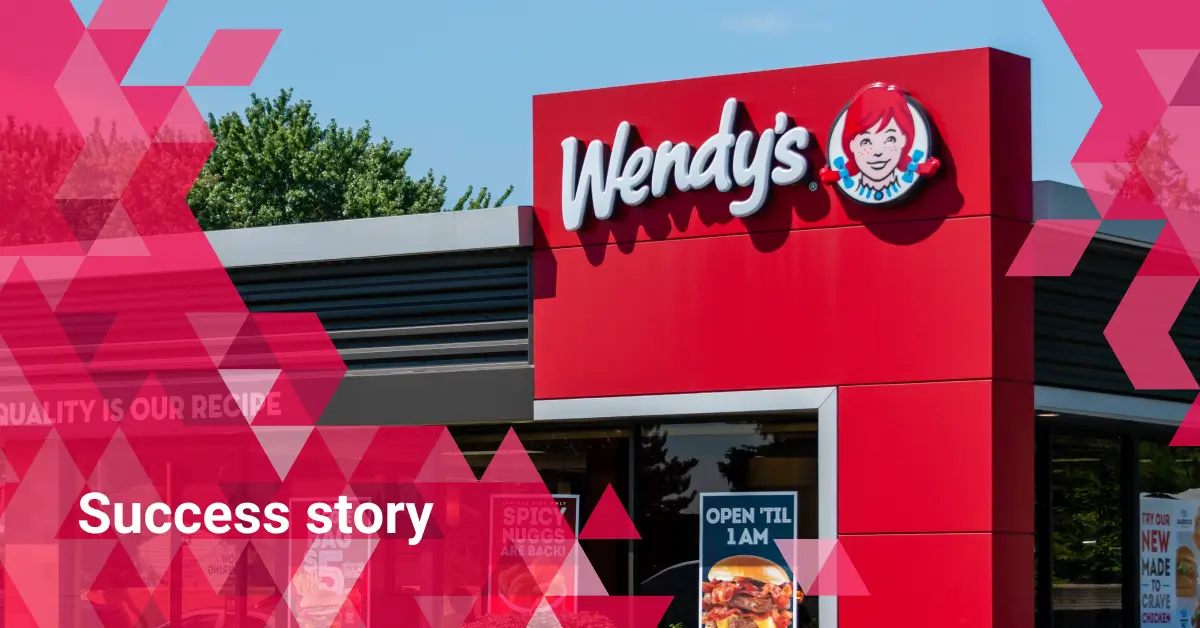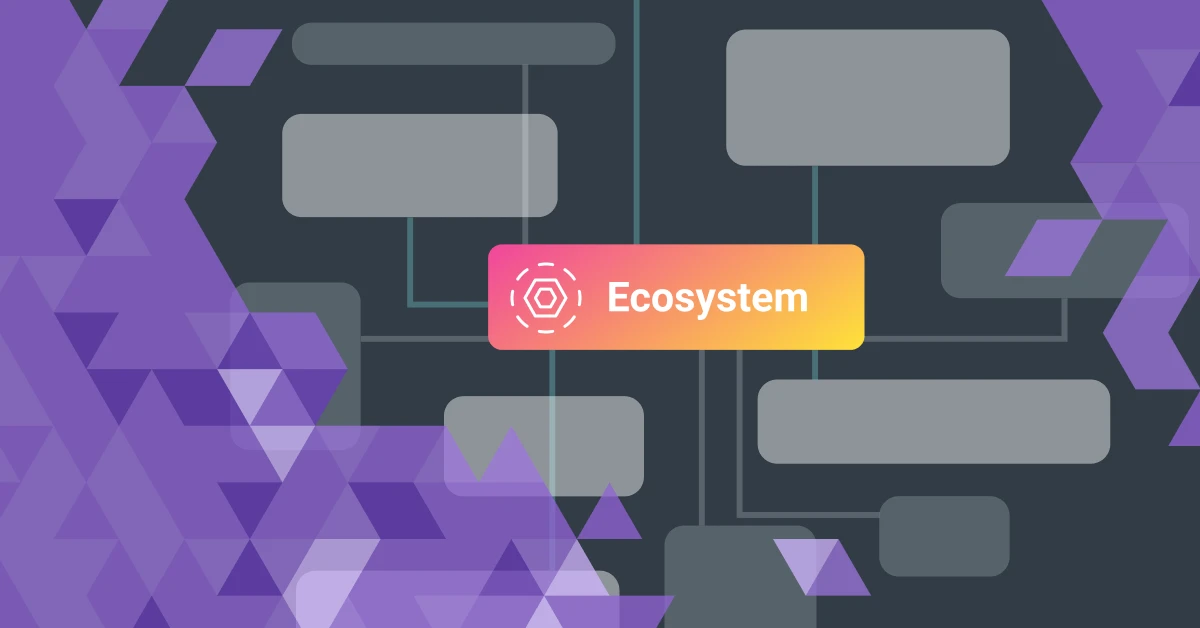Unlike desk-based staff, frontline teams are often dispersed, working shifts, and don’t always have regular access to email or company updates. Yet, they’re the face of your business, driving customer experiences, safety, and productivity every day.
For HR and internal communications leaders, here’s the challenge: how do you keep frontline employees engaged when they’re the hardest to reach — without adding more complexity to their already full days? The answer lies in creating connection, clarity, and opportunities for feedback in the moments that matter.
In this article, we’ll explore frontline employee engagement strategies that reduce attrition, boost productivity, and give every worker a voice.
Why frontline employee engagement deserves more attention
Frontline workers are the foundation of your business. They shape what customers see, how operations run, and ultimately, your bottom line.
Here’s why frontline employee engagement and satisfaction should be a top priority for every leader:
- Safety and quality are at risk: Burnout or disengagement leads to more mistakes and higher safety incidents. Engaged workers are more alert, invested in doing their jobs well, and proactive in spotting and solving problems before they escalate.
- Customer experience depends on it: When frontline employees are engaged, they bring energy, attentiveness, and care to their work. That lifts customer satisfaction, improves brand reputation, and turns routine interactions into moments of loyalty.
- Retention and turnover costs are rising: Disengaged frontline workers are often the first to leave. Replacing them is costly — recruiting, hiring, and training drain resources, slow down teams, and disrupt culture.
What causes frontline workers to disengage?
Beekeeper research highlights the scale of the problem:
- Attrition is hitting record levels. Frontline turnover averages 35–50% across most industries, with hospitality at a staggering 57%.
- It’s not just about pay. While wages remain a top factor, 34% of workers leave for better work-life balance, and 24% for better career prospects.
- Stress and burnout are rising. Nearly half of frontline workers (48%) say their wages aren’t keeping up with inflation, while understaffed shifts and toxic environments add to the pressure.
- Workers feel disconnected from leadership. Frontline employees say they want recognition, adequate staffing, and safe environments, but HQ leaders often underestimate these priorities.
When frontline engagement suffers, businesses see higher turnover, slower operations, and declining customer satisfaction. The reverse is also true: companies that prioritize engagement see higher productivity, loyalty, and resilience.
6 strategies for effective frontline engagement
1. Strengthen two-way communication
Frontline engagement starts with making employees feel heard. One-way announcements aren’t enough — workers need channels to ask questions, share feedback, and raise concerns in real time. That transparency builds trust, speeds up problem-solving, and keeps leaders connected to what’s happening on the ground.With a platform like Beekeeper, managers can share updates in Streams where frontline staff can comment directly, turning messages into conversations. Quick pulse surveys and secure chats make it easy for every employee, no matter their shift or location, to have a voice. By making communication less chaotic and more collaborative, every employee feels connected and supported.
Want a sneak peek? Watch the video 👇
2. Recognize and reward contributions
Recognition is one of the strongest drivers of frontline employee engagement. When workers feel invisible, morale drops and turnover climbs. But when their hard work is acknowledged, motivation and retention improve.Beekeeper makes recognition part of everyday work. The Recognition Widget lets employees share instant appreciation posts, while Streams and Chats make it easy to highlight team wins across shifts and locations. You can also use built-in forms for award nominations, or connect Beekeeper to existing rewards programs through its marketplace of integrations.
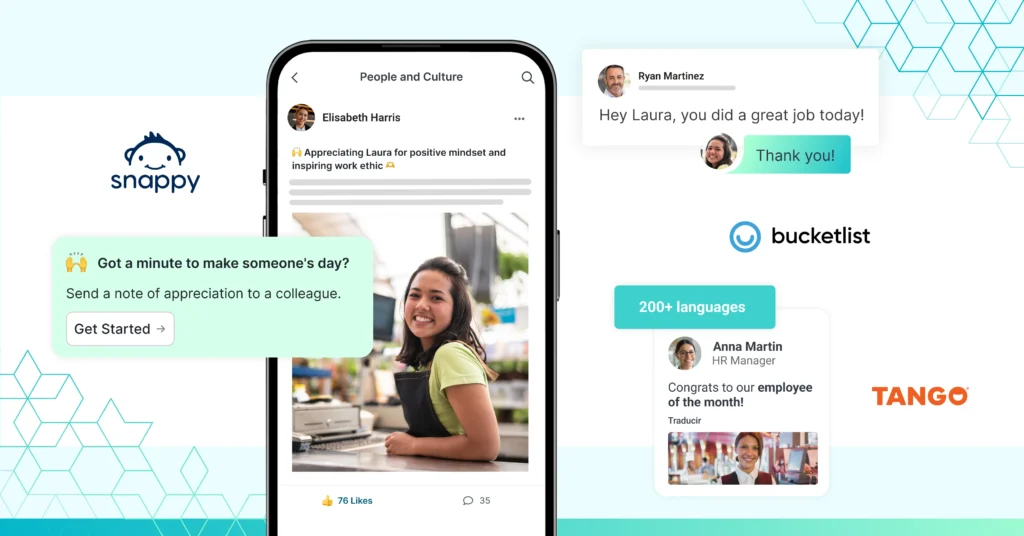
3. Invest in growth and development
Frontline roles are often seen as temporary stepping stones. But when employees don’t see a path forward, they leave. To change this, companies need to show that growth is possible on the job. Offering training, mentorship, and skill-building opportunities shows frontline workers they’re valued contributors with long-term potential.
Best practices for frontline engagement include creating clear career pathways, offering microlearning that fits into busy schedules, and giving employees chances to cross-train in different roles.
4. Support well-being and fair scheduling
Unpredictable schedules and last-minute shift changes disrupt both work and personal lives, driving stress and turnover. Transparent, fair scheduling is a powerful way to show you care about employees’ well-being.
With Beekeeper’s shift work scheduling capabilities, employees can:
- View upcoming shifts from their mobile devices, so they always know when they’re working
- Request shift changes or update availability in the app, reducing friction caused by rigid schedules
- Get push alerts inform when shifts are changed or updated so there are no surprises
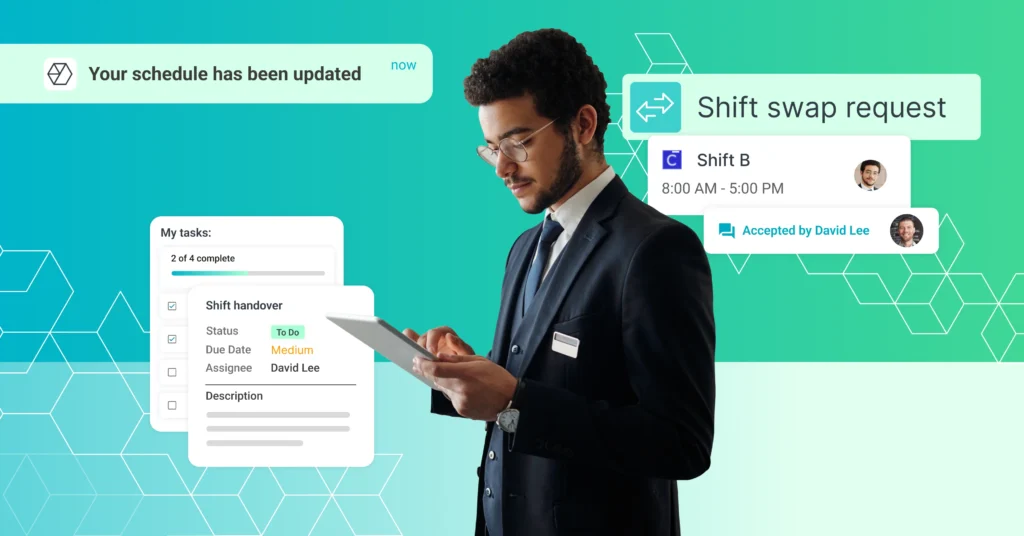
5. Use AI and digital tools to simplify work
Frontline employees lose countless hours to manual processes and communication barriers. AI and automation remove that friction, giving teams more time for meaningful work.Beekeeper’s AI features simplify everyday workflows. Instant message translation ensures updates reach employees in their preferred language, while routine tasks like onboarding forms or shift requests are automated. Managers also gain real-time insights into engagement and productivity, helping them address issues early
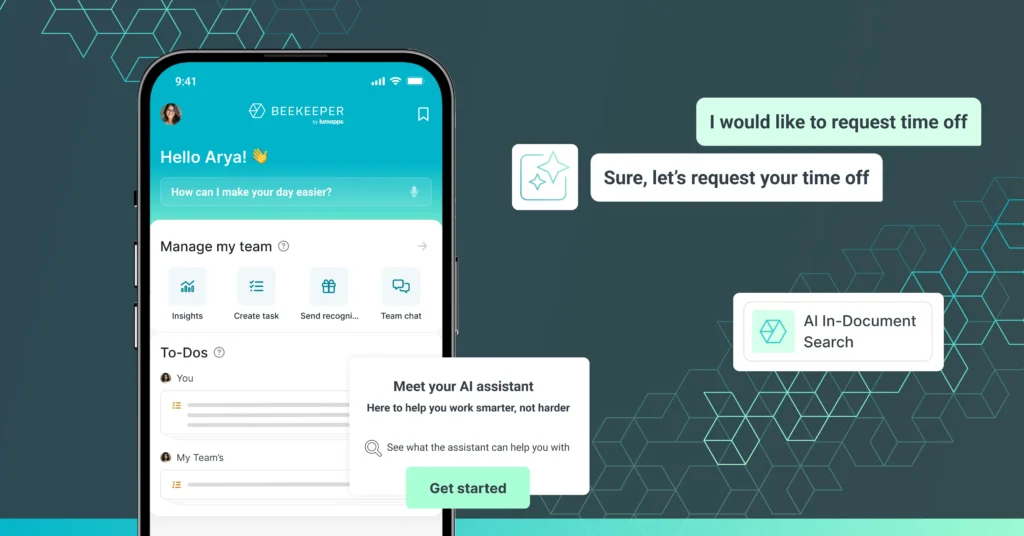
6. Build an inclusive and safe workplace
Safety and inclusion go hand in hand with frontline engagement. Frontline jobs are often physically demanding and customer-facing, making employees vulnerable to accidents, stress, and even harassment. Companies that invest in strong safety protocols, clear reporting channels, and genuine care for employee well-being earn long-term trust and loyalty.
Creating an inclusive and safe environment isn’t a one-off initiative — it requires consistent communication, leadership accountability, and action. When employees know their voices are heard and their well-being is prioritized, engagement is the natural outcome.
How Beekeeper supports frontline engagement
Putting these frontline engagement strategies into practice can feel overwhelming, especially for organizations with large, dispersed teams. That’s why at Beekeeper, we created a Template Library, with ready-to-use workflows and campaigns designed specifically for frontline needs.
From onboarding checklists and recognition programs to pulse surveys and safety updates, these templates give managers a fast way to launch initiatives without starting from scratch. Each one is built around proven best practices, so you can quickly customize and deploy engagement programs that fit your workforce.
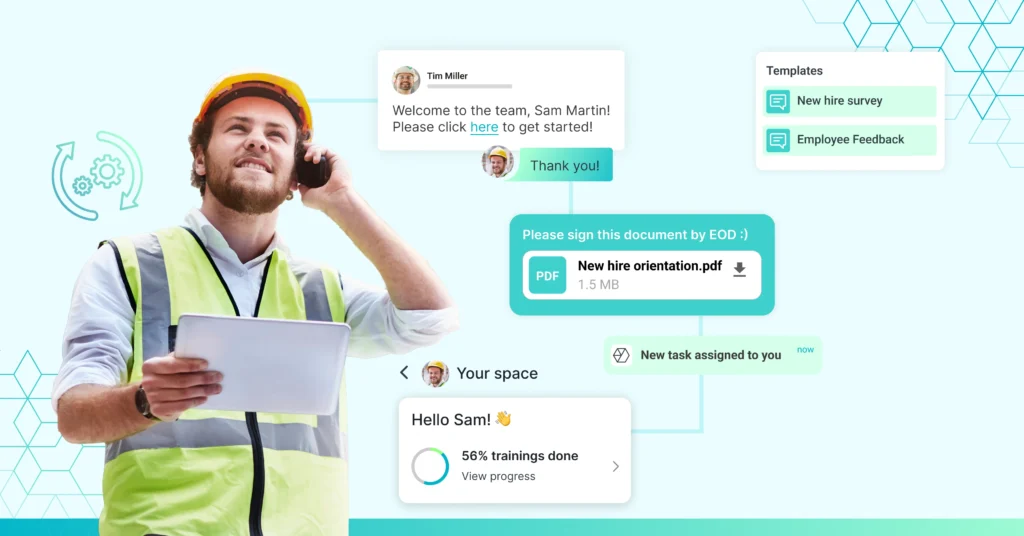
💡 Get started today. Explore Beekeeper’s Template Library to start rolling out impactful engagement programs. Create your account to access the library.
Frontline engagement: From compliance to connection
Frontline engagement isn’t just about checking the box on communication or compliance. It’s about building genuine connection, making sure every employee feels heard, supported, and valued.
Beekeeper helps organizations make that transformation possible. With mobile-first communication, recognition tools, shift management, and a library of ready-to-use engagement templates, it’s never been easier to empower frontline employees and keep teams aligned.
With Beekeeper, organizations can finally move from chaos to clarity, empowering every employee and giving leaders the confidence to keep teams aligned.

About the author
Beekeeper
We make frontline lives easier, work safer, and teams more connected so businesses can reach new heights. At Beekeeper, we’re dedicated to making frontline lives easier by connecting workers with the tools, support, and information they need to feel valued, do their best work, and drive the business forward.
Ready to engage your frontline workforce?
Beekeeper is the all-in-one platform built for deskless employees.
Simplify communication, boost retention, and give every worker a voice.
